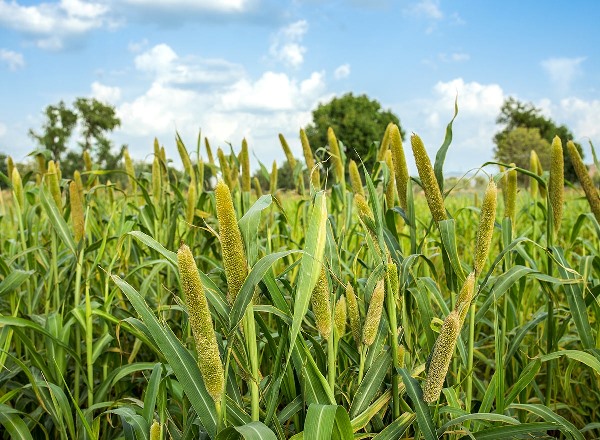Why is eating millet important?
Few people know that millets are highly nutritious and important for gluten-free proteins, vitamins, minerals, high fibre, and roughage. They are a good source of Iron, Calcium, Magnesium, Zinc, and Phosphorus, which are important for enzyme activity and maintaining good health. B complex vitamins help keep a healthy nervous system, while high fibre smooths the digestive system. The presence of complex carbohydrates helps to regulate blood sugar levels, thereby being good in the prevention of diabetes.

Categories of millets
Based on its uses, millets are classified into two categories:
- Naked grains: These millet grains are devoid of indigestible husk. These Millets don’t require processing after harvesting. As they don’t have tough husk, they can be consumed after clear ning followed by drying on sunlight. This group includes Ragi, Jowar, and Bajra.
- Husked grains: This group includes Foxtail, Little, and Kodo millets. These millets have indigestible and rough seed coats that must be removed before consumption as they are unfit to eat.
Types of millets
- Foxtail millets: Foxtail millets are known as Kakum/Kaugini and Italian millets. They are small-seeded millet, known for their high yield and short growing season, making them a popular crop worldwide. This is the most searched type of millet.
- Pearl Millets/Bajra: They are one of the most widely cultivated millets in the world. It is a staple food in many parts of Africa, Asia, and South America. It is known for its high tolerance to heat and drought. Bajra is a nutrient-dense cereal. It contains minerals such as Calcium, Magnesium, iron, and fibre. It is often used to make traditional dishes such as porridge, flatbreads, and fermented foods. Regular consumption of Pearl Millet helps in managing Type II Diabetes.
- Buck Wheat: Buck Wheat is an excellent healthy option for healthy food.
- Little Millets: They are rich in fibre with lots of minerals like Potassium, Zinc, Iron, and Calcium.
- Finger Millets: These are also known as Ragi. It’s a staple food in many parts of Africa and Asia.
- Proso Millets: They are also known as common millets.
- Sorghum: They are also known as Jowar. It is also known for its high tolerance to heat and drought.
5 Wonder Health Benefits of Pearl Millets
- Aids weight loss: The calorie content of millet is low, so they are considered an excellent option for weight loss. It maintains energy throughout the day without eating between meals or nibbling, as millets always feel full. Millets keep the satiety value for a longer time than other carbohydrates. They take more digestion and absorption time, giving the feeling of fullness. As a result, it prevents overeating and taking snacks at irregular intervals.
- Keeps blood sugar level low: They have a low glycemic index. Therefore, consuming millet is an excellent option for Diabetics.
- Boosts Immunity: A macronutrient, Protein, and other nutrients help maintain body immunity. Millets have a good amount of proteins that help strengthen our immunity.
- Reduces Cardiovascular risks: Millets have essential fats. They provide good fat to our body and prevent excess fat storage, thus lowering the risk of high cholesterol, strokes, and other cardiovascular risks. The Potassium content is also rich in millet, which regulates blood pressure.
- Prevents Bronchial Asthma: Magnesium content in millet reduces the frequency of Migraines. It also lowers the severity of Asthma complaints. Various allergens that lead to wheezing and asthma are not present in Millets. Thus, they are an excellent option for Asthmatics.







Amazing content around maintaining a healthy lifestyle, would request readers to read this blog